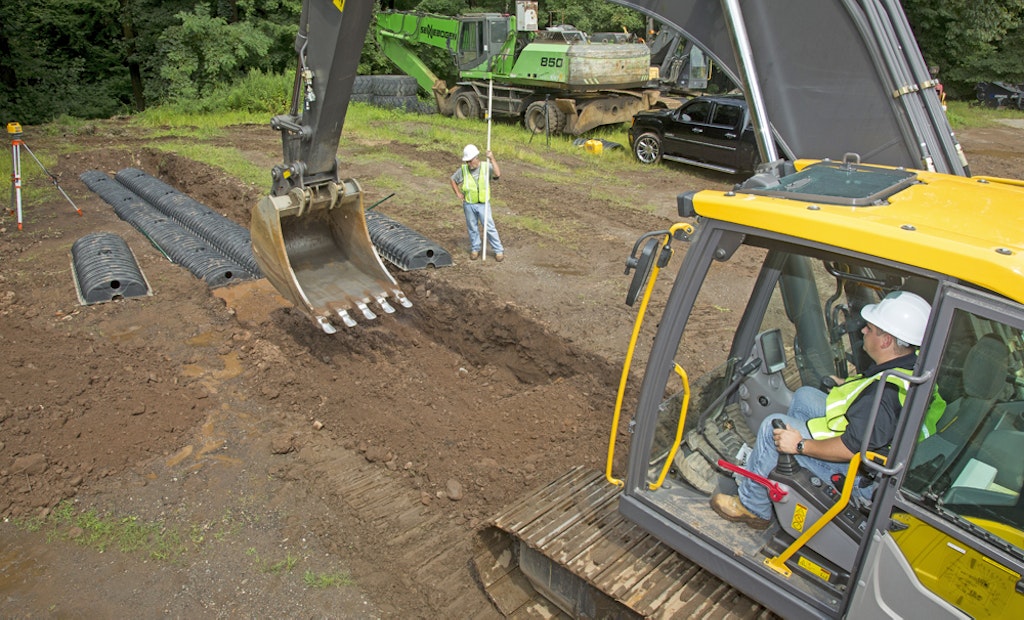
Interested in Trucks?
Get Trucks articles, news and videos right in your inbox! Sign up now.
Trucks + Get AlertsWe’ve discussed how periodically resting all parts of a drainfield can restore soil infiltration. Next we take a look at how additional pretreatment can help drainfield restoration.
If the drainfield is having problems due to organic loading, you might be able to restore the drainfield with additional pretreatment, which reduces the loads to the drainfield. Over time this will help microorganisms in the soil break down the biomat, restoring some of the lost capacity.
In order to determine if the system is organically overloaded, you need to analyze the septic tank effluent using two measures: biological oxygen demand (BOD) and total suspended solids (TSS) levels. BOD measures the amount of dissolved oxygen used by microorganisms in the oxidation of organic matter. TSS is the amount of organic and inorganic suspended solids as the effluent leaves the tank.
A properly functioning septic tank should have a BOD level of 150-170 mg/L and a TSS level of 60 mg/L. Anything more increases the potential for excessive biomat formation, which reduces drainfield infiltration capacity.
Reducing fats, oils and grease — no more than 20 mg/L — is another way to achieve proper waste strength. If these levels are greater than 20 mg/L, the result is high-strength waste.
Improved performance
Additional pretreatment can help successfully reduce high-strength waste and BOD and TSS levels, and it can enhance drainfield performance. Technologies that provide additional pretreatment include aerobic treatment units and media filters (single pass and recirculating) — sand, peat, textiles and other types of media.
About 15 years ago I was involved in a study where we used additional pretreatment to restore a series of drainfield trenches. We installed a recirculating sand filter (RSF) in an existing system between the septic tank and the drainfield. The RSF helped reduce average BOD and TSS levels delivered to the drainfield to 21 mg/L and 25 mg/L.
The ultimate measure of success though is what happened in the drainfield. After we installed the RSF, the drainfield began functioning properly without backups and surfacing. Many other research and demonstration projects verify the same results.
If you’re considering drainfield restoration, be sure to determine that the problem is actually organic loading and not other soil issues. The homeowner must understand and follow a strict maintenance program that pretreatment technologies require. Unlike a more traditional septic-tank-to-drainfield system, pretreatment technologies cannot be completely ignored between service visits. With these more complex systems, you should install an alarm to alert the homeowner to problems with the pump.
Products in today’s market can add aeration directly to the septic tank to reduce organic loading. Success will depend on how resistive the biomat is and whether you can achieve a large enough reduction in loading to make a lasting impact.
Here’s a list of alarms, controls and monitor systems.
For a list of advanced treatment units available in today’s market, visit www.onsiteinstaller.com/editorial/2014/04/advanced_treatment_units4.
About the Author
 Jim Anderson is connected with the University of Minnesota onsite wastewater treatment education program, is an emeritus professor in the university’s Department of Soil Water and Climate, and education coordinator for the National Association of Wastewater Technicians. Send him questions about septic system maintenance and operation by email to kim.peterson@colepublishing.com.
Jim Anderson is connected with the University of Minnesota onsite wastewater treatment education program, is an emeritus professor in the university’s Department of Soil Water and Climate, and education coordinator for the National Association of Wastewater Technicians. Send him questions about septic system maintenance and operation by email to kim.peterson@colepublishing.com.





